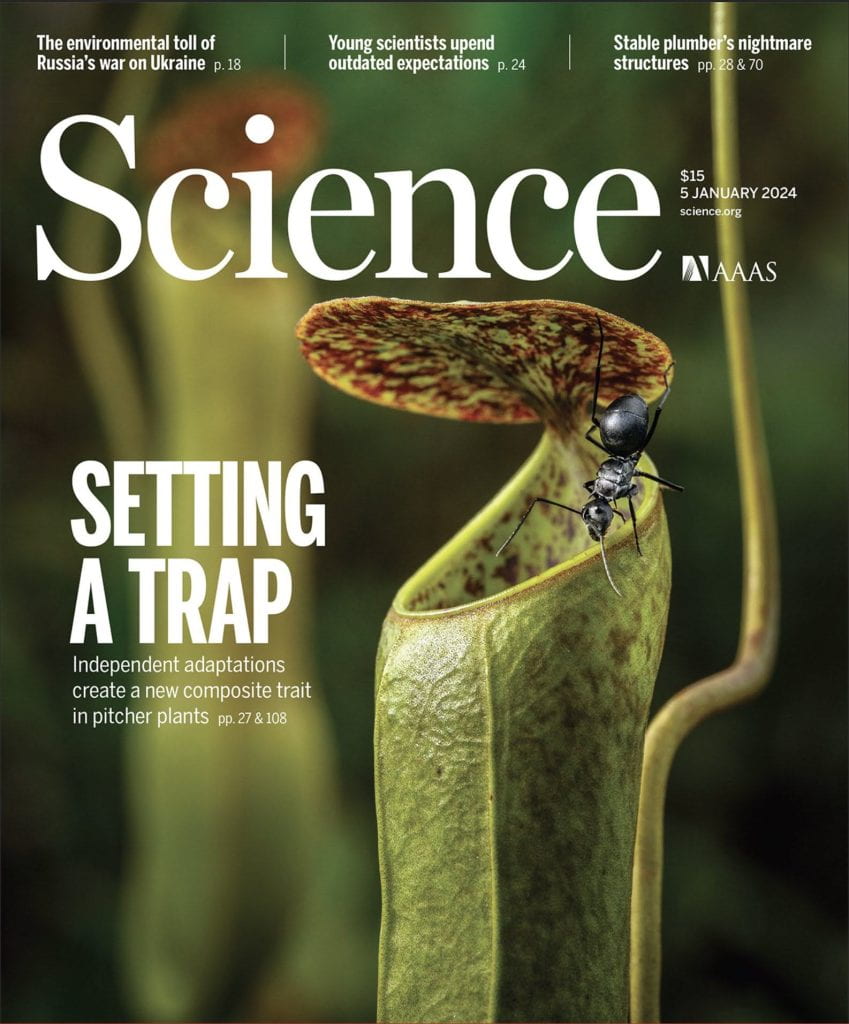The New Year started with a bang for the Mechanical Ecology Lab: our latest paper, explaining the independent evolution of the same complex ‘springboard trapping’ mechanism in two distantly related Nepenthes pitcher plant species, is featured on the front cover of the first issue of Science for 2024!
In the paper, we propose an explanation for how complex ‘composite’ traits can arise from spontaneous coincidence of a trait combination with synergistic new function. Springboard trapping relies on three independent traits that only gain a trapping function when they coincide in the right combination. Until now, the origins of composite traits have remained largely a mystery as it requires coordinated evolution of components that might not be beneficial or even functional on their own. Our results highlight the importance of random trait variation – so-called stochastic phenotypic plasticity – and chance events in the generation of evolutionary novelty.
The study involved an interdisciplinary team of biomechanists, biochemists and evolutionary biologists and took 7 years from the initial discovery that N. pervillei from the Seychelles and N. gracilis from Borneo share the same whacky springboard mechanism, to the final publication in Science. A beautiful example of the true magic that can happen when you pull together a team from very different backgrounds and disciplines.
